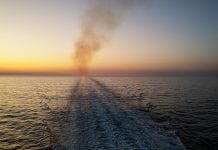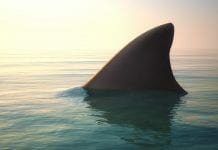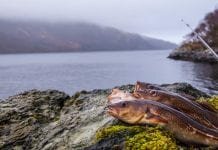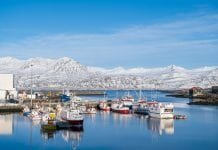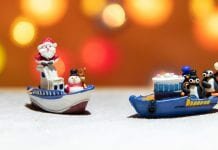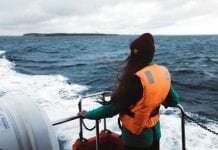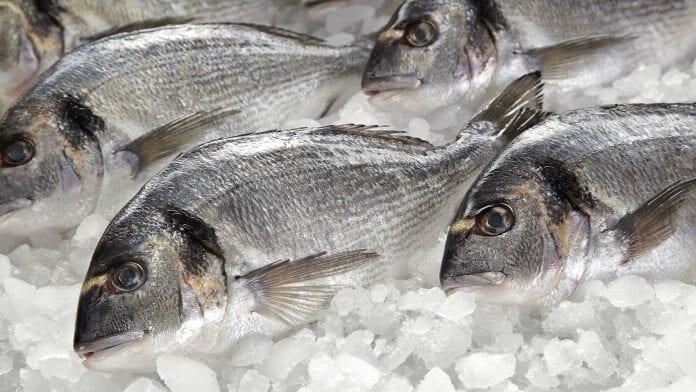
Good Fish Foundation and Seas at Risk explain the environmentally responsible aquaculture model and highlight the importance of sustainable aquaculture from an NGO perspective.
The contribution of aquaculture to the global production of capture fisheries and aquaculture combined has risen continuously – reaching 53 per cent in 2016, up from 25.7 per cent in 2003. As a consequence, the dependence on sustainable aquaculture to provide us with seafood will continue to increase. Because of the growing demand, the European Commission and EU Member States pursue plans to increase aquaculture production even further.
Globally the consumption of fish has increased from nine kilograms per capita in the 1960s to 20.2 kg per capita in 2015. The average seafood consumption per year in the EU lies at 25.1 kg per person. Europe represents the biggest market for seafood products worldwide and it continues to grow. Thereby, the local demand exceeds the local supply, leading to the majority of the seafood products being imported into Europe from third countries. An increasing seafood supply and consumption challenges the European seafood businesses, the policy makers and the conservation specialists to ensure a steady sustainable aquaculture supply in the future, without depleting natural stocks.
While in the last three decades, global aquaculture has seen growth figures of around 8 per cent per annum, in Europe aquaculture production has stagnated, and currently provides only 10 per cent of European seafood consumed. Sustainable aquaculture is often perceived to be the solution to overfishing. Therefore, the EU sees huge growth potential in the sector and thus would contribute to closing the gap between dwindling wild fish catches and the ever-growing consumer demand for seafood. Efforts to boost the sector are included in the reformed Common Fisheries Policy (CFP), the European Maritime and Fisheries Fund (EMFF) and the EU’s Blue Growth agenda for economic growth and employment, which singled out the aquaculture sector as one of its five priority areas.
According to the CFP, Member States have to develop multi-annual national strategic plans for the development of sustainable aquaculture activities on their territory to enable them to apply for 2014-2020 EMFF funding. To support the national planning, the Commission issued ‘Strategic Guidelines for the Sustainable Development of EU Aquaculture’. However, rather than consolidating a vision of sustainable aquaculture development underpinned by clearly defined principles, the EU guidelines focus on actions to remove administrative barriers, and showcase the perceived high environmental, animal health and consumer protection standards as the EU aquaculture’s main competitive factors. This concerns a wide range of European environmental NGOs: aquaculture in Europe is not definitively sustainable, and more effort is needed to really work on the EU’s sustainable aquaculture business. Farming fish and shellfish increases seafood availability but can also cause habitat and ecosystem alteration, impact wild populations, cause pollution and spread disease.
Blue Growth: a missed opportunity
The other point of concern is the EU’s Blue Growth agenda. The success of the Blue Growth strategy is measured by four priority areas – which are only social and economic objectives. No environmental objective has been integrated and that is a missed opportunity – not only for the environment but also for the sustainable aquaculture sector.
In focusing solely on the same four areas identified by the European Commission in its 2013 strategic guidelines, the recently published report by the European Parliament titled ‘Towards a sustainable and competitive European aquaculture sector: current status and future challenges’ provides little new insight. Like the Commission’s publication, the Parliament’s report advocates reducing the administrative burden for aquaculture producers, co-ordinating spatial planning to define new areas for sustainable aquaculture farms, increasing the competitiveness of European aquaculture, and creating a level playing field between domestic and imported aquaculture products. It will thus contribute to neither a more environmental approach to European aquaculture nor the growth of the sector within the EU.
While the report states that €1.2 billion is allocated through the European Maritime and Fisheries Fund to support development of the sustainable aquaculture sector, the current low uptake of these funds suggests that such innovation remains scarce. In addition, the report promotes investment in pilot projects on farming practices that reduce the environmental impact of aquaculture (such as integrated multi-trophic aquaculture systems, aquaponics, and recirculation aquaculture systems) instead of supporting EU-wide implementation.
At an EU parliamentary hearing in January of this year, Seas at Risk outlined several recommendations for a future model for European aquaculture. Had they integrated some of these proposals, MEPs could have developed an environmentally responsible aquaculture model with an ecosystem-based approach. This, in turn, would have supported the development of a multi-stakeholder platform between scientists, industry representatives and NGOs who work together to define environmentally responsible sustainable aquaculture objectives. Their failure to do so represents a missed opportunity to develop a progressive new vision for European aquaculture.
Aquaculture and environment: not at odds
Due to the media attention and NGOs discussing negative impacts of aquaculture, the perception of the public is that aquaculture and the environment is at odds with each other. That they have contradictory objectives, this is not true. Aquaculture practices do not need to contradict the environmental needs. Today, sustainable aquaculture technology and know-how has advanced so much, that it actually can play a significant role in achieving environmental objectives.
Seas at Risk and Good Fish Foundation believe that: since aquaculture functions within the environment, the environment must become the framework in which economic and social objectives are defined. In other words, the economic and social objectives should be set within a vision for environmentally sustainable aquaculture. The way we look at aquaculture and the way we deal with aquaculture is outdated for three reasons. First, the industry and the environment are often viewed separately as if these systems work isolated from each other. Second, the interconnectedness of effects at the global and local level are not considered enough. And third, defining the objectives and making appropriate decisions are generally not carried out in collaboration with all stakeholders.
We therefore propose firstly a new aquaculture model, namely an environmentally responsible sustainable aquaculture model in which environment and aquaculture go hand in hand. Environmentally responsible aquaculture is defined by these five key aspects:
- Ensure sustainable sourcing of feed;
- Minimise negative impacts on biodiversity;
- Reduce the impact of chemicals use;
- Promote the development of integrated multi-trophic sustainable aquaculture and aquaponics; and
- Includes Animal Welfare which is key for the EU quality products, environmental sustainability, animal health and consumer protection.
Employing this model will lead to EU seafood products that provide good animal welfare, are good for human health, and have excellent branding possibility that can revert the negative reputation of aquaculture and create a larger market demand in co-operation with NGOs, thus creating a niche market for EU sustainable aquaculture products.
Secondly, we propose a new way of looking at aquaculture. By looking at aquaculture not from a single level, but by taking an ecosystem-based approach. Measuring the impact of an aquaculture operation solely on the outcomes of one level e.g. job creation or revenue generated, is short-sighted. Instead we should look at the implications of decisions on a larger system level – which we call an ecosystem level.
If we look at this same production from an ecosystem level, we could consider the net benefits for the environment, which could be increased water quality in the case of shellfish aquaculture, and better coastal structure and habitat in cases where natural reef structures are eroded through human activities and by growing kelp forests or direct and indirect negative impacts on ecosystems caused by e.g. diminishing of a species, causing another species to take up that niche. Therefore, we should always look at sustainable aquaculture from an ecosystem-based approach. Either at a micro scale: what are the impacts of its operations on water quality or habitat, or at a macro scale: what is its possible role in lowering greenhouse emissions through seaweed aquaculture, reduce land and fresh water use?
Thirdly, we propose a new way of dealing with aquaculture through a multi-stakeholder approach, in which knowledge and resources are pooled, and goals are jointly defined. Collaboration between scientists, aquaculture farmers and NGOs are at the centre of more effective development and implementation of sustainable aquaculture objectives. It is of utmost importance to match the species, the farm scale and locations through strategic planning, collaboration and monitoring services.
A first step of the multi-stakeholder approach on the policy level is the Aquaculture Advisory Council. In 2016, the Aquaculture Advisory Council (AAC) was established: a stakeholder-led body with the main objective to provide the European Commission and its Member States with recommendations and advice on issues related to the development of sustainable aquaculture in the EU.
For the first time, NGOs are playing an important role by influencing decision-making processes regarding aquaculture as they make up 40 per cent of the AAC members in its general assembly and executive committee. In the coming years NGOs will be asked to provide more frequent input in aquaculture-related subjects. They want to ensure effective integration of sustainable aquaculture planning and policy development (under the Blue Growth agenda and the Common Fisheries Policy) with existing environmental policies, such as the Marine Strategy Framework Directive, the Habitats and Birds Directives, and the Maritime Spatial Planning Directive.
It is important that strong NGO input is guaranteed in the new Aquaculture Advisory Council (AAC) and other bodies, including exchange of information on regional and EU developments with its members. This can only be achieved by allocating finances to these activities.
Markets: an essential pathway in driving sustainable aquaculture
Over the past 20 years, demand for environmentally sustainable seafood has been growing in many markets around the world. Consumers and businesses want to ensure that the seafood products they buy are produced in ways that do not come with a high environmental price tag. As a result, next to certification schemes, seafood rating schemes have been initiated by NGOs in Europe and elsewhere to educate everyone, from the general public, to multinational corporations about the complex world of seafood production; and inform them about which seafood is sustainable and which to avoid buying until improvements to production practices are made.
Since most aquaculture products consumed in Europe are produced thousands of miles away, it can be hard for consumers to understand the sustainability challenges or how their food choices can influence positive change. This is where European sustainable aquaculture producers definitely are at an advantage, since their standards already outperform most non-European production.
The market initiatives work along the marine policies and positively add to management by building awareness of environmental issues and identifying sustainable seafood options. In other words, seafood organisations applying these tools to the market, harness consumer purchasing power and create market demand for sustainable seafood.
In conclusion, European environmental NGOs hope that through their efforts the opportunity to develop a progressive new vision for European sustainable aquaculture as described above will arise so that the mistakes that were made in European agriculture will not be repeated once again.
Margreet van Vilsteren
Director
Good Fish Foundation
Tweet @MMvanVilsteren
www.goodfish.guide
Marc-Philip Buckhout
Aquaculture Policy Officer
Seas At Risk
Tweet @Mp_buckhout
www.seas-at-risk.org


